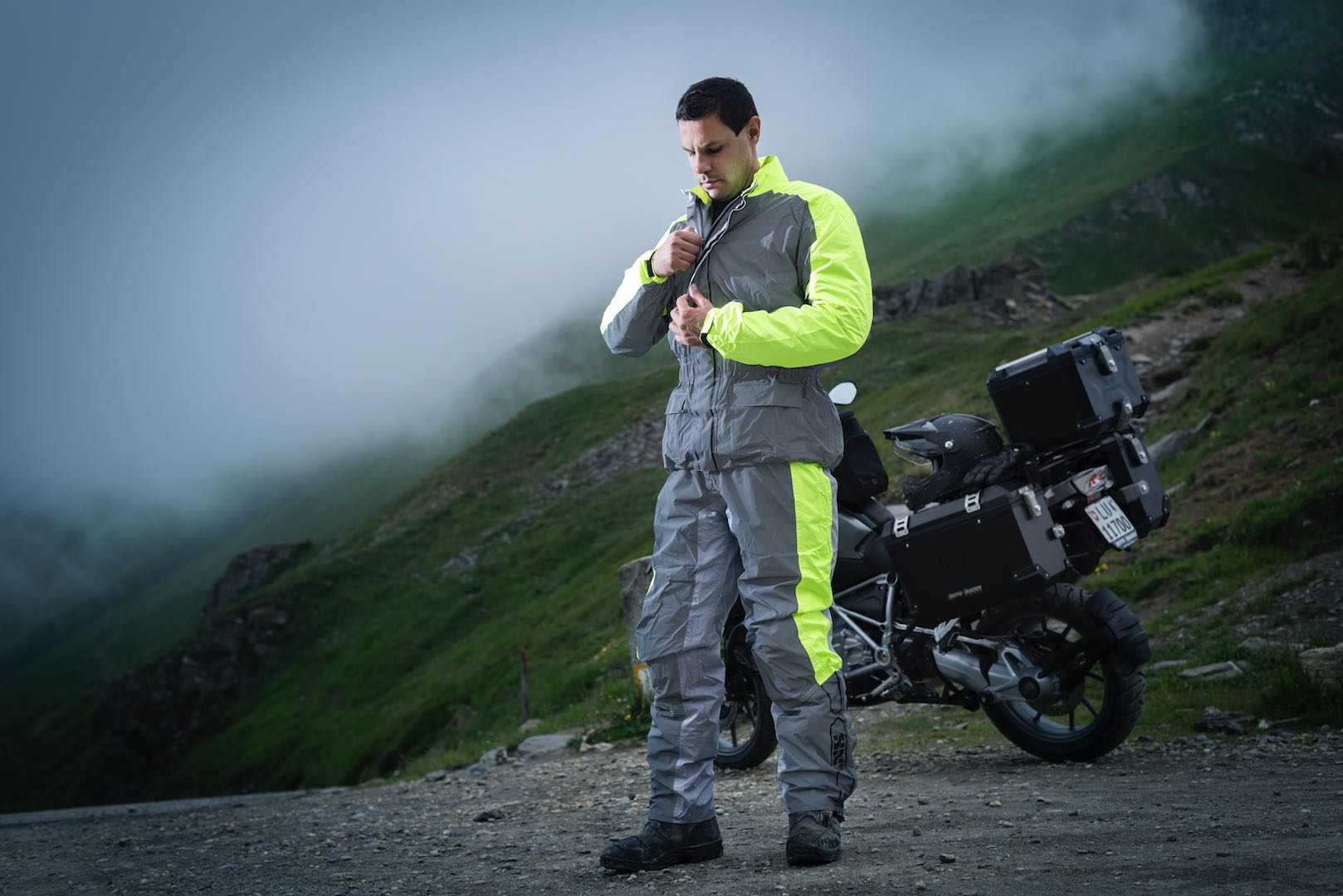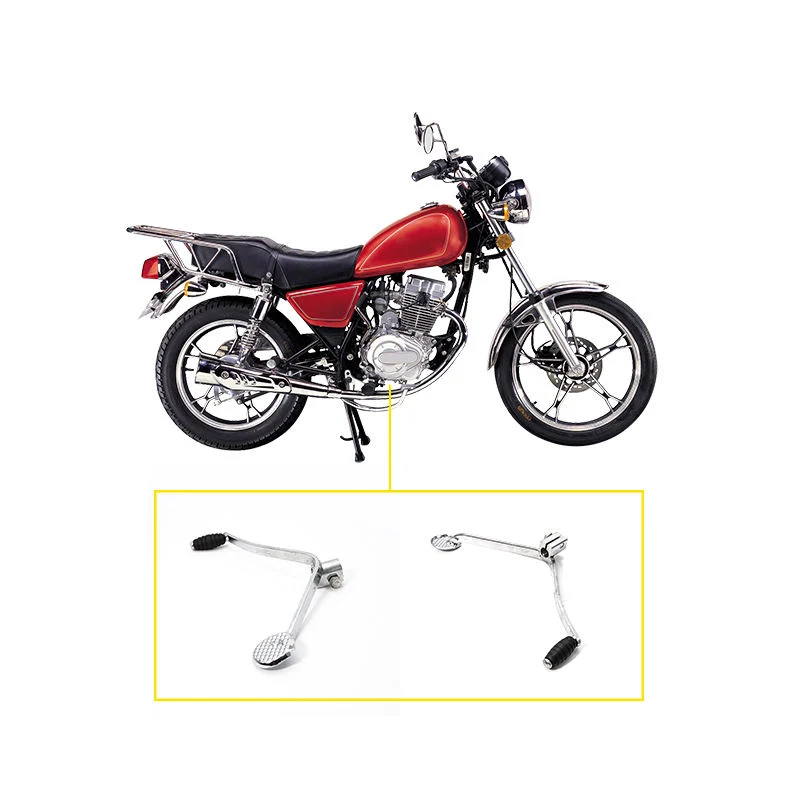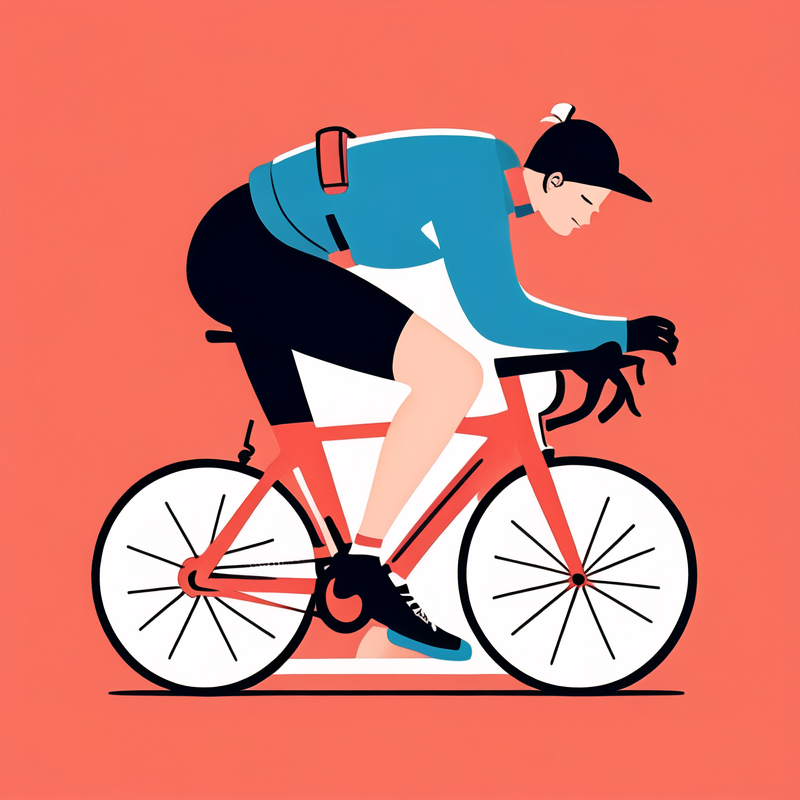Introduction to Motorcycle Rain Suits
Why Motorcycle Rain Suits Matter
Motorcycle rain suits are essential for any rider who wants to stay comfortable and dry in adverse weather conditions. Riding a motorcycle exposes you to the elements more directly than driving a car, making weather protection vitally important. Understanding why motorcycle rain suits matter can help you make an informed decision when selecting one, ensuring you remain safe, comfortable, and focused on the road.
Rain can make riding not only uncomfortable but also potentially hazardous. Wet clothing can lead to distractions, reduced focus, and even hypothermia in colder conditions. Additionally, rain reduces visibility for both you and other road users, increasing the risk of accidents. A well-designed rain suit provides comprehensive protection, shielding you from water and wind while maintaining your body heat, significantly enhancing riding safety and comfort.
Additionally, motorcycle rain suits are designed to fit over your regular riding gear, providing an added layer of protection. They are made from waterproof and breathable materials, ensuring that you stay dry without feeling too restricted or hot. These suits often feature sealed seams, waterproof zippers, and adjustable closures, preventing any water from seeping through and ensuring a snug fit.
Understanding the importance of motorcycle rain suits underscores their necessity for any serious rider. By choosing the right suit, you can protect yourself from the elements, maintain comfort, and focus on the road, no matter the weather conditions.
Evolution of Rain Gear for Motorcyclists
The evolution of rain gear for motorcyclists reflects advancements in material technology and design, offering increasingly effective solutions for weather protection. Initially, riders relied on basic waterproof clothing, which often lacked the durability and functionality needed for prolonged riding in harsh conditions. Understanding the evolution of rain gear provides insight into how modern motorcycle rain suits have become essential accessories for the modern rider.
In the early days of motorcycling, riders often used heavy rubberized coats and pants to stay dry. While these provided a barrier against water, they were bulky, uncomfortable, and lacked breathability. This made long rides in wet conditions cumbersome and tiring. The need for more practical and comfortable rain gear led to the development of lighter and more flexible materials, such as nylon and polyester, coated with waterproof layers.
The 1970s and 1980s saw significant advancements in rain gear technology, with the introduction of Gore-Tex and other breathable fabrics. These materials revolutionized rain gear by providing waterproofing without sacrificing breathability. Riders could now stay dry while also allowing perspiration to escape, improving comfort during extended rides. Additionally, improvements in seam-sealing techniques and the use of waterproof zippers further enhanced the effectiveness of rain suits.
Modern motorcycle rain suits incorporate a range of features designed for both protection and convenience. Reflective elements, adjustable closures, and integrated storage options have become standard, ensuring that today’s rain suits offer not only weather protection but also enhanced safety and usability. The evolution of rain gear has thus transformed it from a mere necessity into a sophisticated piece of riding equipment.
Understanding the evolution of rain gear for motorcyclists highlights the advancements in material technology and design, ensuring that modern motorcycle rain suits provide optimal protection and comfort.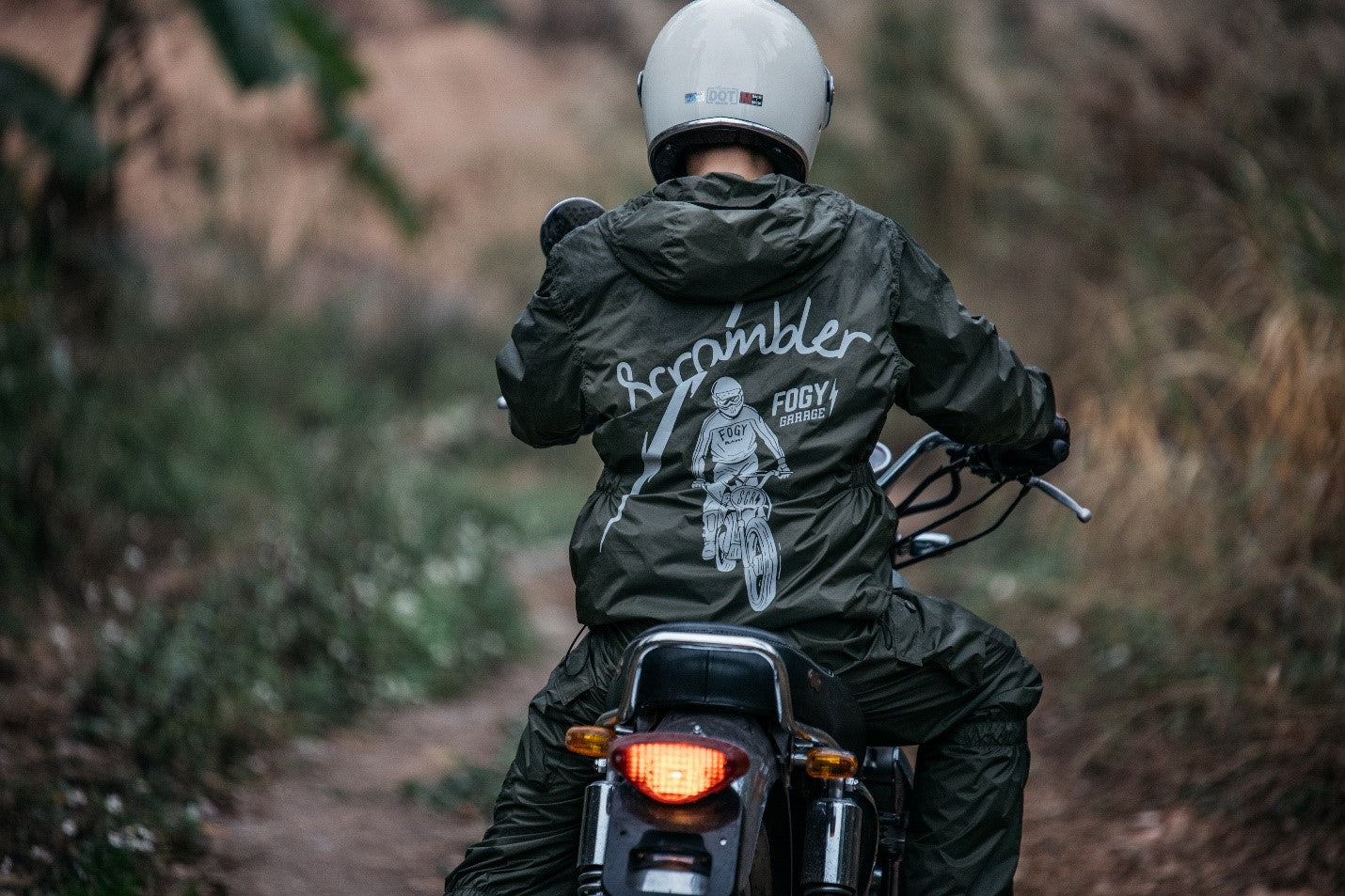
Key Features to Look For
Waterproofing and Breathability
Waterproofing and breathability are crucial features of any motorcycle rain suit, determining its effectiveness and comfort. Understanding these features ensures that you choose a suit that provides the best protection against the elements while maintaining comfort during your ride.
Waterproofing refers to the suit’s ability to prevent water from penetrating the material, keeping you dry. High-quality motorcycle rain suits are made from advanced materials like Gore-Tex, eVent, or other similar waterproof membranes. These materials are designed to block out water while allowing moisture from sweat to evaporate, maintaining comfort. Additionally, features like sealed seams, waterproof zippers, and adjustable closures enhance the waterproofing effectiveness, ensuring that no water can seep through potential weak points.
Breathability is equally important, as it allows perspiration to escape from inside the suit, preventing you from feeling clammy or overheated. Breathable rain suits use materials that allow moisture vapor to pass through while blocking liquid water. This technology ensures that you remain dry and comfortable, even during strenuous riding or in changing weather conditions. Proper ventilation in key areas, such as underarms or back vents, further enhances breathability, providing a more comfortable riding experience.
When choosing a motorcycle rain suit, consider the balance between waterproofing and breathability. A suit that excels in both areas will provide comprehensive weather protection while ensuring comfort on long rides. Look for suits that offer detailed information about their waterproof and breathable ratings, and read reviews to understand how they perform in real-world conditions.
Waterproofing and breathability are essential features of a motorcycle rain suit, ensuring that you stay dry and comfortable during your ride. Understanding these features helps you choose a suit that provides optimal protection against the elements, enhancing your overall riding experience.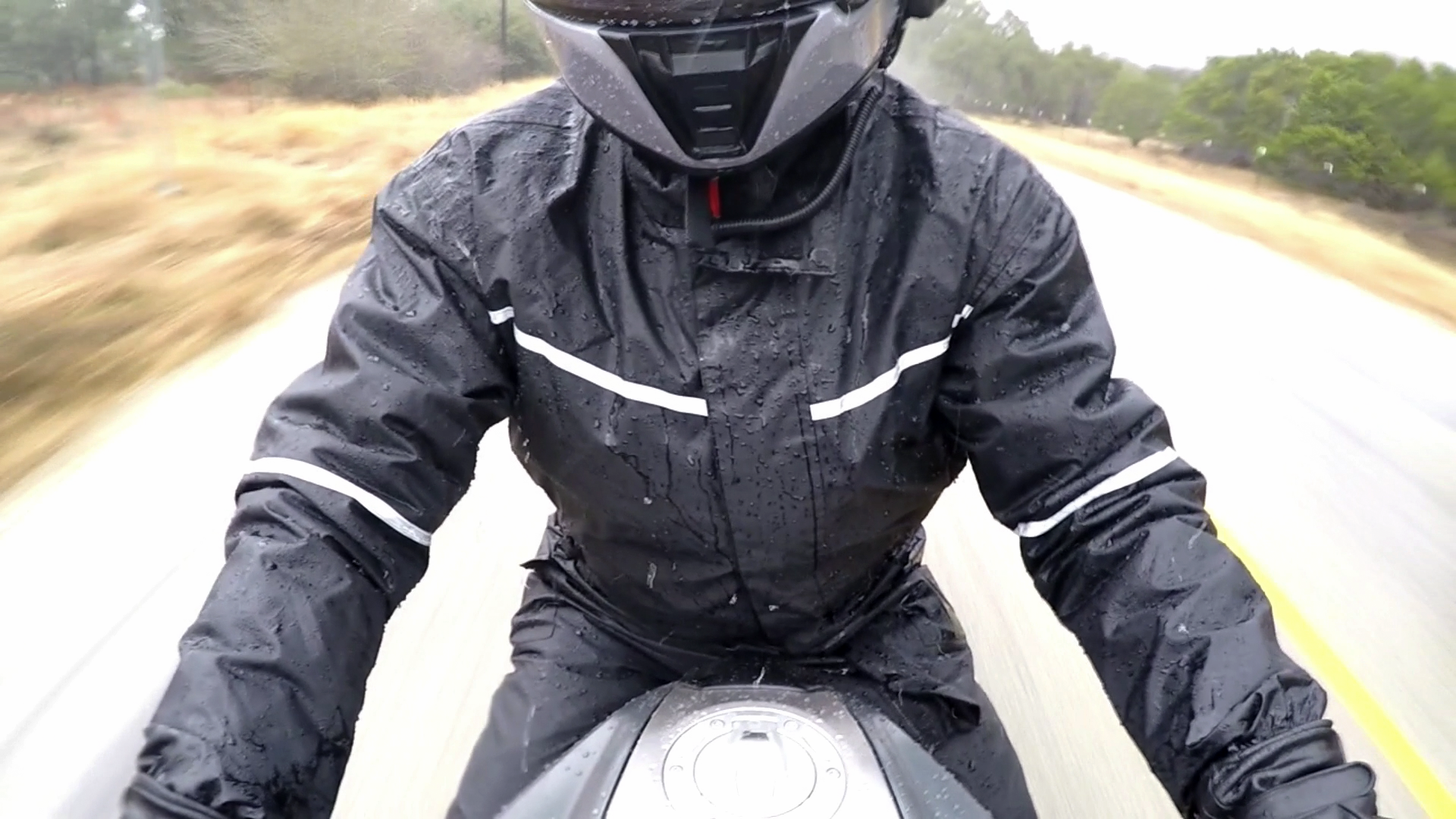
Durability and Fit
Durability and fit are critical aspects to consider when selecting a motorcycle rain suit, as they determine the suit’s longevity and comfort. Understanding these features ensures that you choose a rain suit that can withstand the rigors of riding while providing a comfortable fit.
Durability refers to the suit’s ability to resist wear and tear, maintaining its effectiveness over time. High-quality motorcycle rain suits are made from robust materials that can endure the stresses of riding, such as abrasion from wind, contact with the motorcycle, and exposure to various weather conditions. Features like reinforced seams, heavy-duty zippers, and high-denier fabrics contribute to the suit’s overall durability. Additionally, durable suits are often treated with water-repellent coatings that maintain their effectiveness even after repeated use and washing.
Fit is equally important, as a well-fitting rain suit ensures comfort and freedom of movement. Motorcycle rain suits are typically designed to fit over your regular riding gear, so it’s essential to choose the right size. A suit that is too tight can restrict movement, affecting your ability to control the motorcycle. Conversely, a suit that is too loose can flap in the wind, causing distractions and discomfort. Adjustable elements like cuffs, waistbands, and leg closures help achieve a secure and comfortable fit, ensuring that the suit stays in place during your ride.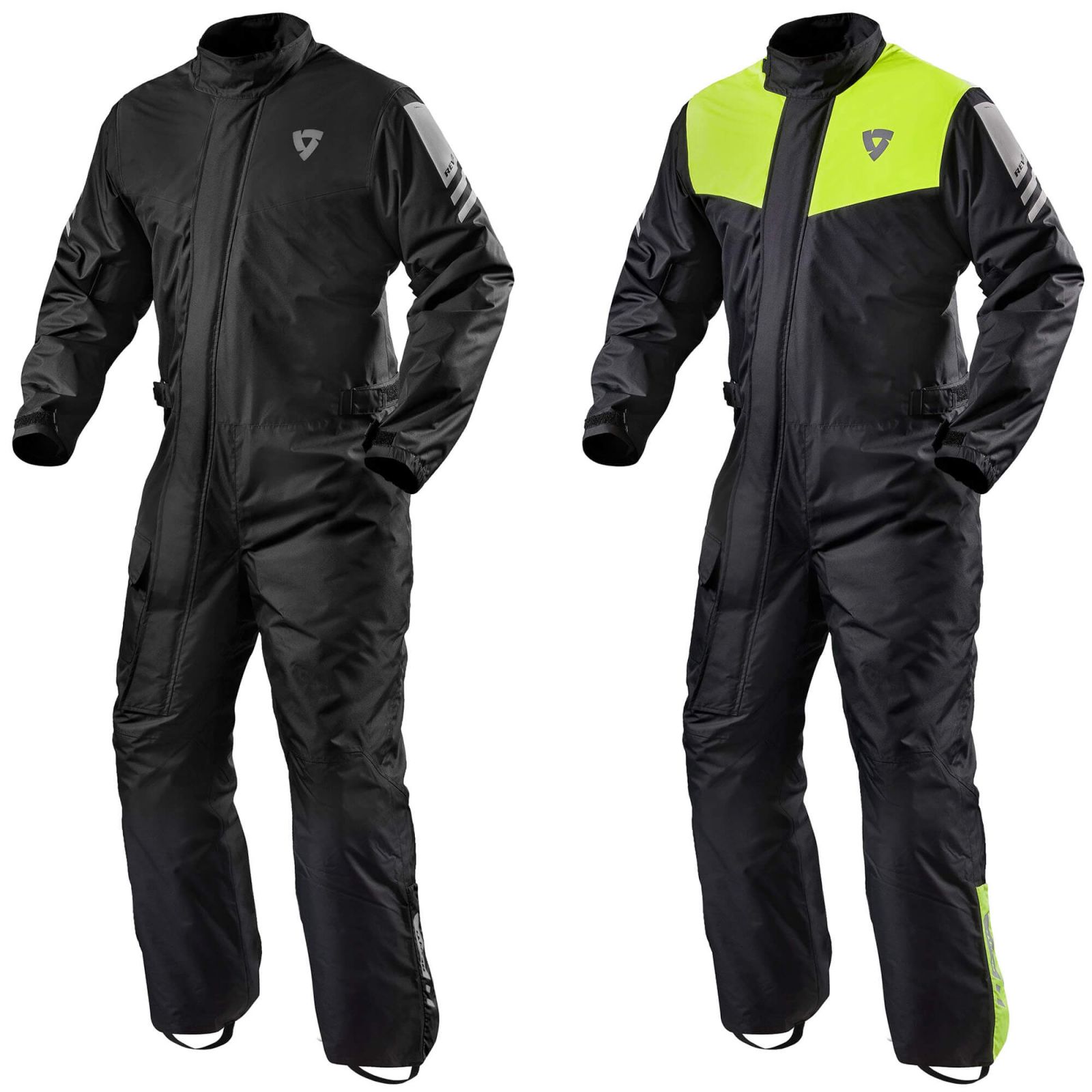
Choosing the Right Motorcycle Rain Suit
Assessing Your Riding Needs
Choosing the right motorcycle rain suit begins with assessing your specific riding needs. Different riders may have varying requirements based on factors such as weather conditions, ride duration, and personal preferences. Understanding your riding needs ensures that you select a rain suit that provides the best protection and comfort for your particular situation.
Consider the typical weather conditions you encounter. If you frequently ride in heavy rain, you’ll need a rain suit with excellent waterproofing capabilities. Look for materials like Gore-Tex or eVent, known for their superior waterproofing and breathability. For riders in milder climates, a lighter rain suit with adequate water resistance and ventilation may suffice. Assessing the weather conditions helps you prioritize the features that matter most to you.
Next, consider the duration and frequency of your rides. Long-distance riders who spend hours on the road require rain suits with superior durability and comfort. Features like reinforced seams, additional padding, and high breathability are essential for preventing fatigue and discomfort during extended rides. For short commutes, a more straightforward and lightweight rain suit may be sufficient, providing quick and easy protection against sudden showers.
Personal preferences also play a significant role in choosing a rain suit. Some riders prefer one-piece suits for their comprehensive coverage and ease of donning. Others may opt for two-piece suits (jacket and pants) for greater flexibility and convenience. Reflective elements, color choices, and integrated storage options further align with individual preferences and enhance both safety and usability.
By thoroughly assessing your riding needs, you can determine the specific features and characteristics that matter most in a motorcycle rain suit. This assessment ensures that you select a suit tailored to your unique requirements, providing effective protection and enhancing your overall riding experience.
Comparing Brands and Models
Once you’ve assessed your riding needs, the next step is to compare different brands and models of motorcycle rain suits. Understanding the strengths and weaknesses of various options helps you make an informed decision, ensuring you choose a rain suit that meets your requirements and offers the best value for your investment.
Start by researching reputable brands known for their quality and reliability. Brands like Alpinestars, Klim, and Rev’It! are widely recognized for their high-quality rain gear and innovative designs. Each brand may offer unique features and technologies, so it’s important to understand what sets them apart. Reading reviews and testimonials from other riders can provide valuable insights into the performance and durability of specific models.
Compare the features of different rain suits, focusing on aspects like waterproofing, breathability, durability, and fit. High-end models often incorporate advanced materials and technologies that enhance weather protection and comfort. Consider the specific features that align with your riding needs, such as reinforced seams, adjustable closures, and ventilation options. Additionally, look for practical features like reflective elements, integrated storage pockets, and ease of donning and doffing.
Price is another important factor when comparing brands and models. While higher-priced rain suits often offer superior quality and advanced features, there are also budget-friendly options that provide adequate protection and comfort. Assess your budget and weigh the benefits and features of each model to find the best balance between cost and performance.
Conclusion: Investing in the Right Motorcycle Rain Suit
Investing in the right motorcycle rain suit is essential for any rider who wants to stay comfortable and safe in adverse weather conditions. Understanding the importance of rain suits and their key features helps you make an informed decision, ensuring you select a suit that meets your specific riding needs.
Motorcycle rain suits have evolved significantly over the years, incorporating advanced materials and technologies that provide superior waterproofing and breathability. Durability and fit are also critical aspects, ensuring the suit withstands the rigors of riding while providing a comfortable and secure fit. By thoroughly assessing your riding needs and comparing different brands and models, you can find a rain suit that offers the best protection and value.
Ultimately, a high-quality motorcycle rain suit enhances your riding experience by keeping you dry, comfortable, and focused on the road. Whether you’re embarking on long-distance journeys or navigating short commutes, investing in the right rain suit ensures you’re prepared for any weather conditions, allowing you to enjoy the ride with confidence and peace of mind.
